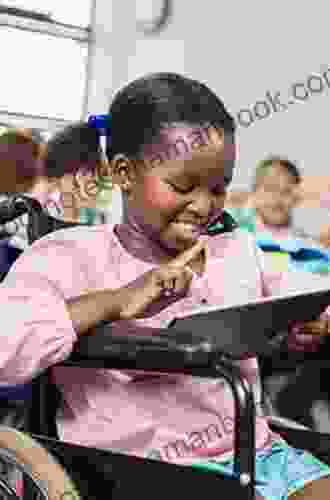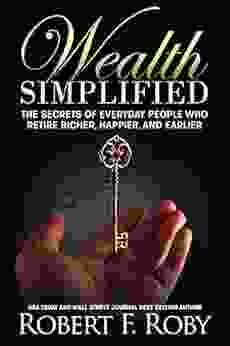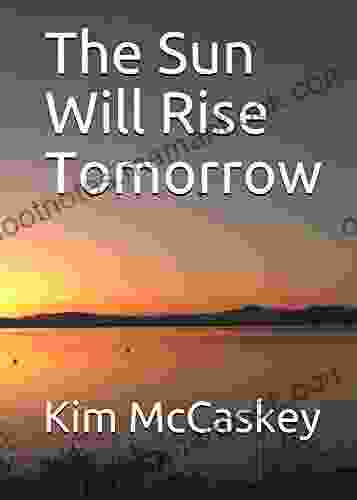Educating Students with Disabilities: A Comprehensive Guide for Educators

4.6 out of 5
| Language | : | English |
| File size | : | 2773 KB |
| Text-to-Speech | : | Enabled |
| Screen Reader | : | Supported |
| Enhanced typesetting | : | Enabled |
| Word Wise | : | Enabled |
| Print length | : | 246 pages |
Educating students with disabilities requires specialized knowledge and skills to ensure that their learning needs are met. This guide provides educators with a comprehensive understanding of various disabilities, inclusive learning environments, individualized education programs (IEPs),and assistive technology to effectively support students with disabilities in their academic and personal development.
Understanding Disabilities
Disabilities can be broadly categorized into five types:
- Learning disabilities (e.g., dyslexia, dyscalculia, dysgraphia) affect cognitive skills such as reading, writing, and math.
- Cognitive disabilities (e.g., intellectual disability, traumatic brain injury) impair overall intellectual functioning.
- Physical disabilities (e.g., cerebral palsy, muscular dystrophy) limit physical movement or function.
- Sensory disabilities (e.g., blindness, deafness, hearing loss) affect the ability to see or hear.
- Emotional and behavioral disabilities (e.g., autism spectrum disorder, ADHD) disrupt social and emotional development.
Each disability has unique characteristics and requires specific educational interventions. Educators must understand the nature and impact of each disability to create appropriate learning experiences.
Creating Inclusive Learning Environments
Inclusive learning environments foster a sense of belonging and provide opportunities for students with disabilities to participate fully in the learning process. Key principles include:
- Equal access to learning: Ensuring that all students have access to the same curriculum and activities, with modifications and support as needed.
- Positive attitudes and expectations: Creating a school culture that respects and values diversity and encourages all students to reach their potential.
- Collaborative support systems: Involving parents, specialists, and support staff in providing individualized support and accommodations.
- Flexible learning environments: Adapting learning spaces and materials to meet the sensory, cognitive, and physical needs of students.
By implementing these principles, educators can create learning environments where students with disabilities feel supported, respected, and challenged.
Individualized Education Programs (IEPs)
IEPs are legal documents that outline the specific services, supports, and accommodations necessary to meet the unique needs of each student with a disability. Key components include:
- Present levels of performance: A description of the student's current academic and functional skills.
- Annual goals: Measurable and specific goals that address the student's areas of need.
- Special education and related services: A description of the specific services, supports, and accommodations that will be provided.
- Accommodations: Modifications to assignments, assessments, or learning environments to ensure equitable access for students with disabilities.
- Evaluations: Regular assessments to monitor the student's progress and make necessary adjustments to the IEP.
IEPs are developed collaboratively by a team that includes the student, parents, educators, and specialists. They are reviewed and updated annually to ensure that they remain relevant and effective.
Assistive Technology
Assistive technology can enhance the learning experience for students with disabilities by providing tools and supports to overcome challenges and access the curriculum. Common types of assistive technology include:
- Text-to-speech software: Reads aloud digital text, making it accessible for students with dyslexia or visual impairments.
- Speech-to-text software: Transcribes spoken words into text, facilitating communication for students with speech or hearing impairments.
- Augmentative and alternative communication (AAC) devices: Provide non-verbal communication options for students with severe speech impairments.
- Adapted keyboards and input devices: Designed to accommodate different physical abilities and make typing and computer use easier.
- Sensory supports: Provide calming or stimulating sensory input to support students with autism or ADHD.
By using assistive technology, educators can empower students with disabilities to participate fully in the learning process and achieve their academic goals.
Best Practices for Educators
Educators play a crucial role in providing effective education for students with disabilities. Best practices include:
- Be proactive: Identify and address potential barriers or challenges early on to prevent learning difficulties.
- Collaborate with parents: Establish a strong partnership with parents to gain insights into the student's needs and preferences.
- Provide differentiated instruction: Tailor instruction and assessments to meet the individual learning styles and needs of students with disabilities.
- Utilize assistive technology: Integrate assistive technology into the learning environment to support students with specific challenges.
- Monitor student progress: Regularly assess student progress and make adjustments to interventions or accommodations as needed.
By adhering to best practices, educators can create equitable and supportive learning environments where students with disabilities can thrive and reach their full potential.
Educating students with disabilities is a rewarding and important endeavor. By understanding various disabilities, creating inclusive learning environments, implementing individualized education programs, and utilizing assistive technology, educators can empower students with disabilities to achieve academic success and personal growth. This guide provides a comprehensive overview of essential knowledge and strategies for educators to effectively support students with disabilities in their learning journey.
4.6 out of 5
| Language | : | English |
| File size | : | 2773 KB |
| Text-to-Speech | : | Enabled |
| Screen Reader | : | Supported |
| Enhanced typesetting | : | Enabled |
| Word Wise | : | Enabled |
| Print length | : | 246 pages |
Do you want to contribute by writing guest posts on this blog?
Please contact us and send us a resume of previous articles that you have written.
 Top Book
Top Book Novel
Novel Fiction
Fiction Nonfiction
Nonfiction Literature
Literature Paperback
Paperback Hardcover
Hardcover E-book
E-book Audiobook
Audiobook Bestseller
Bestseller Classic
Classic Mystery
Mystery Thriller
Thriller Romance
Romance Fantasy
Fantasy Science Fiction
Science Fiction Biography
Biography Memoir
Memoir Autobiography
Autobiography Poetry
Poetry Drama
Drama Historical Fiction
Historical Fiction Self-help
Self-help Young Adult
Young Adult Childrens Books
Childrens Books Graphic Novel
Graphic Novel Anthology
Anthology Series
Series Encyclopedia
Encyclopedia Reference
Reference Guidebook
Guidebook Textbook
Textbook Workbook
Workbook Journal
Journal Diary
Diary Manuscript
Manuscript Folio
Folio Pulp Fiction
Pulp Fiction Short Stories
Short Stories Fairy Tales
Fairy Tales Fables
Fables Mythology
Mythology Philosophy
Philosophy Religion
Religion Spirituality
Spirituality Essays
Essays Critique
Critique Commentary
Commentary Glossary
Glossary Bibliography
Bibliography Index
Index Table of Contents
Table of Contents Preface
Preface Introduction
Introduction Foreword
Foreword Afterword
Afterword Appendices
Appendices Annotations
Annotations Footnotes
Footnotes Epilogue
Epilogue Prologue
Prologue Creek Stewart
Creek Stewart Dongxiao Qin
Dongxiao Qin Jim Barrow
Jim Barrow Terrence Adams
Terrence Adams Katie Hickey
Katie Hickey Mark Owens
Mark Owens J Sharpe
J Sharpe Natsuki Takaya
Natsuki Takaya Harlan Coben
Harlan Coben Kimberla Lawson Roby
Kimberla Lawson Roby Laura Minter
Laura Minter Admiral William H Mcraven
Admiral William H Mcraven Larry Kay
Larry Kay Miranda Jarrett
Miranda Jarrett Brian Pomphrey
Brian Pomphrey Amy Cravitz
Amy Cravitz Joel Salatin
Joel Salatin Anderson Cooper
Anderson Cooper Julia Huni
Julia Huni Paru Itagaki
Paru Itagaki
Light bulbAdvertise smarter! Our strategic ad space ensures maximum exposure. Reserve your spot today!
 Ryūnosuke AkutagawaFollow ·12.4k
Ryūnosuke AkutagawaFollow ·12.4k Hudson HayesFollow ·14.7k
Hudson HayesFollow ·14.7k Chase SimmonsFollow ·7.4k
Chase SimmonsFollow ·7.4k Melvin BlairFollow ·11.7k
Melvin BlairFollow ·11.7k Juan RulfoFollow ·18.8k
Juan RulfoFollow ·18.8k Percy Bysshe ShelleyFollow ·19.8k
Percy Bysshe ShelleyFollow ·19.8k Curtis StewartFollow ·12.2k
Curtis StewartFollow ·12.2k Tennessee WilliamsFollow ·19.3k
Tennessee WilliamsFollow ·19.3k

 Colin Foster
Colin FosterBlacktop Wasteland: A Novel S A Cosby
In the vast literary landscape of...
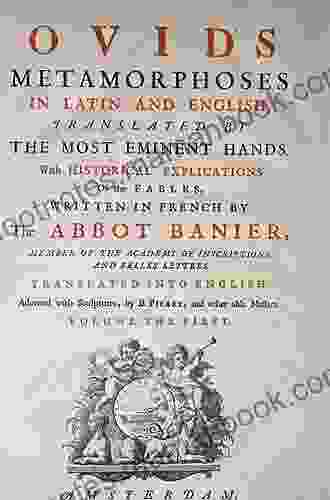
 Curtis Stewart
Curtis StewartOvid's Metamorphoses: An Ancient Epic of Transformation...
Ovid's Metamorphoses is an epic poem...
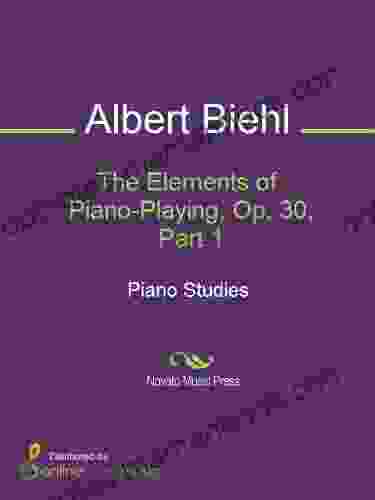
 Adam Hayes
Adam HayesThe Elements of Piano Playing Op. 30: A Comprehensive...
: Unveiling...
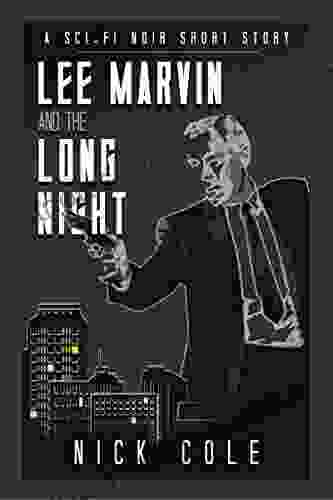
 Patrick Hayes
Patrick HayesLee Marvin and The Long Night: A Tale of Vengeance, Grit,...
In the annals of Western cinema, few...

 Jermaine Powell
Jermaine PowellUnveiling the Alluring World of Romantic Thrillers,...
Prepare to delve into a...
4.6 out of 5
| Language | : | English |
| File size | : | 2773 KB |
| Text-to-Speech | : | Enabled |
| Screen Reader | : | Supported |
| Enhanced typesetting | : | Enabled |
| Word Wise | : | Enabled |
| Print length | : | 246 pages |


